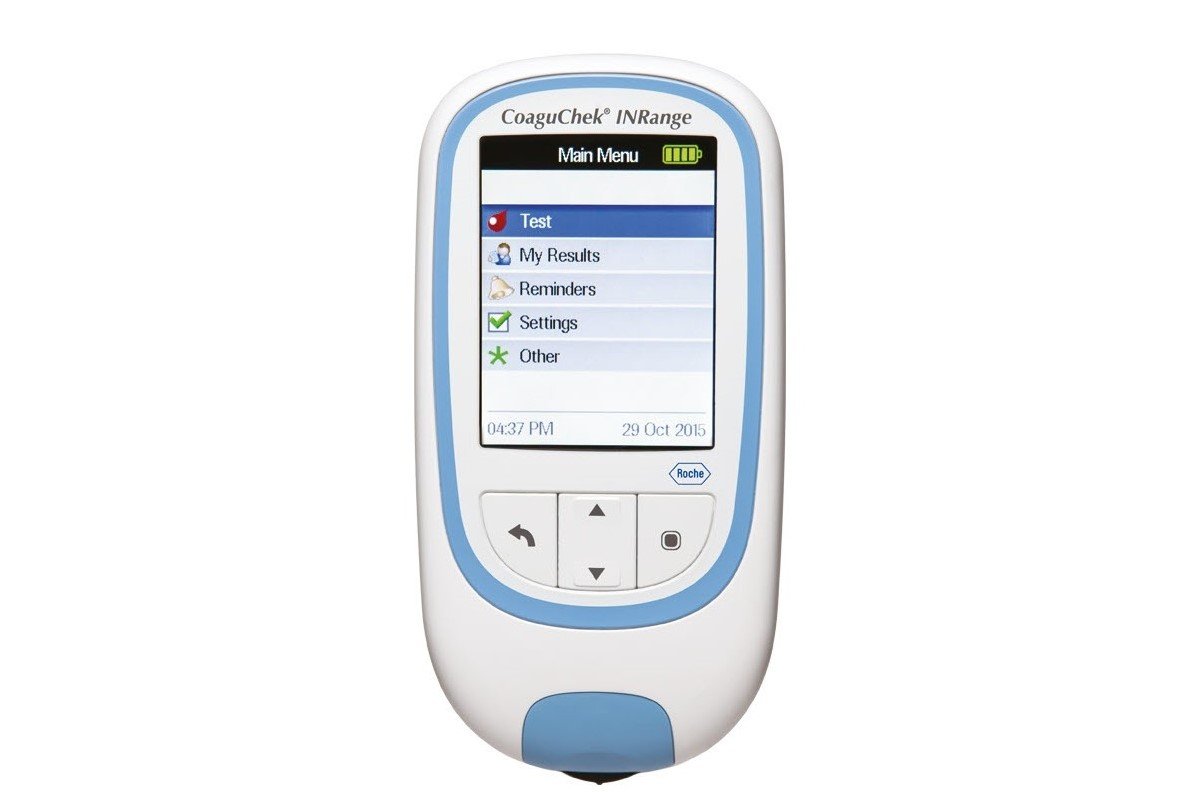The CoaguChek INRange system, consisting of the CoaguChek INRange meter and the CoaguChek XS PT Test PST test strip, is intended for the determination of prothrombin time (PT) in fresh capillary blood. It is intended for use by properly selected and appropriately trained patients and their respective caregivers.
The prothrombin time (PT) test is a general coagulation test to monitor Vitamin K Antagonist therapy.
The CoaguChek INRange system is intended for single patient self-testing only. It is not intended for use in a professional setting.
The connected self-testing meter that gives you the freedom to test your INR at home, on the go, or wherever you happen to be.
CoaguChek INRange is the connected self-testing meter that enables your patients to test their NR whenever, wherever - for confident control of their VKA therapy.
Anticoagulation treatment
Why are anticoagulants prescribed?
The human body has a complex mechanism called coagulation that causes blood to clot if a wound occurs. Under normal circumstances this is desirable; it allows the body to heal itself. Yet in some clinical conditions, coagulation can cause unwanted blood clots that may lead to complications and can be life threatening.
Oral anticoagulants, such as warfarin and phenprocoumon, are used to prevent blood clots and are often referred to as "blood thinners".
Anticoagulants are commonly prescribed for the following conditions : 1-3
- Atrial fibrillation (irregular heartbeat)
- Mechanical heart valves
- Stroke
- Venous thromboembolism
- Thrombophilia (tendency to cause blood clots)
- Heart attack
- Understanding INR values
- An INR of 1 is normal in healthy individuals who are not taking anticoagulants5
- An INR of 2 means that your blood takes twice as long to clot as normal5
The therapeutic INR range for patients on anticogulation therapy can vary depending on the indication VKAs are prescribed for. However, the target range is commonly between 2.0-3.0
If the INR is too low, there is an increased risk of blood clots that can lead to stroke
If the INR is too high, there is an increased risk of bleeding
Keeping your INR in range is key. Know your value.
Regular INR monitoring is important to help determine if your dose needs to be adjusted. Your doctor will provide you with a target INR range. For people taking VKAs, which include warfarin, the target INR typically ranges from 2 to 3, but may be different depending on the patient and his or her condition



